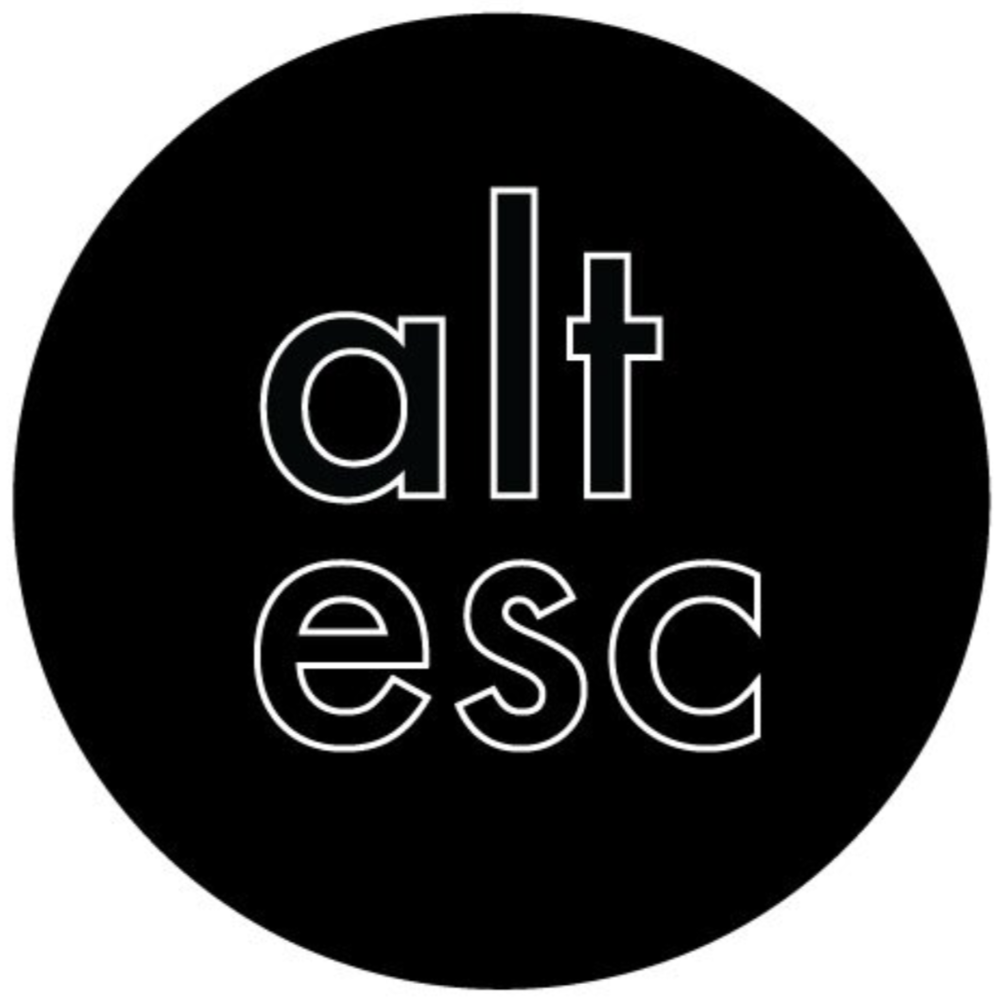CALLI MOORE
Calli Moore is a Brooklyn-based painter and sculptor. She uses cake decorators, foam, acrylic, faux gator fabric, and things she finds in a hardware store to create sensual and tactile objects that teeter on the threshold of alien and organic. Her work was recently a part of a group exhibition "Painting/Object" at the Library Street Collective in Los Angeles, CA.

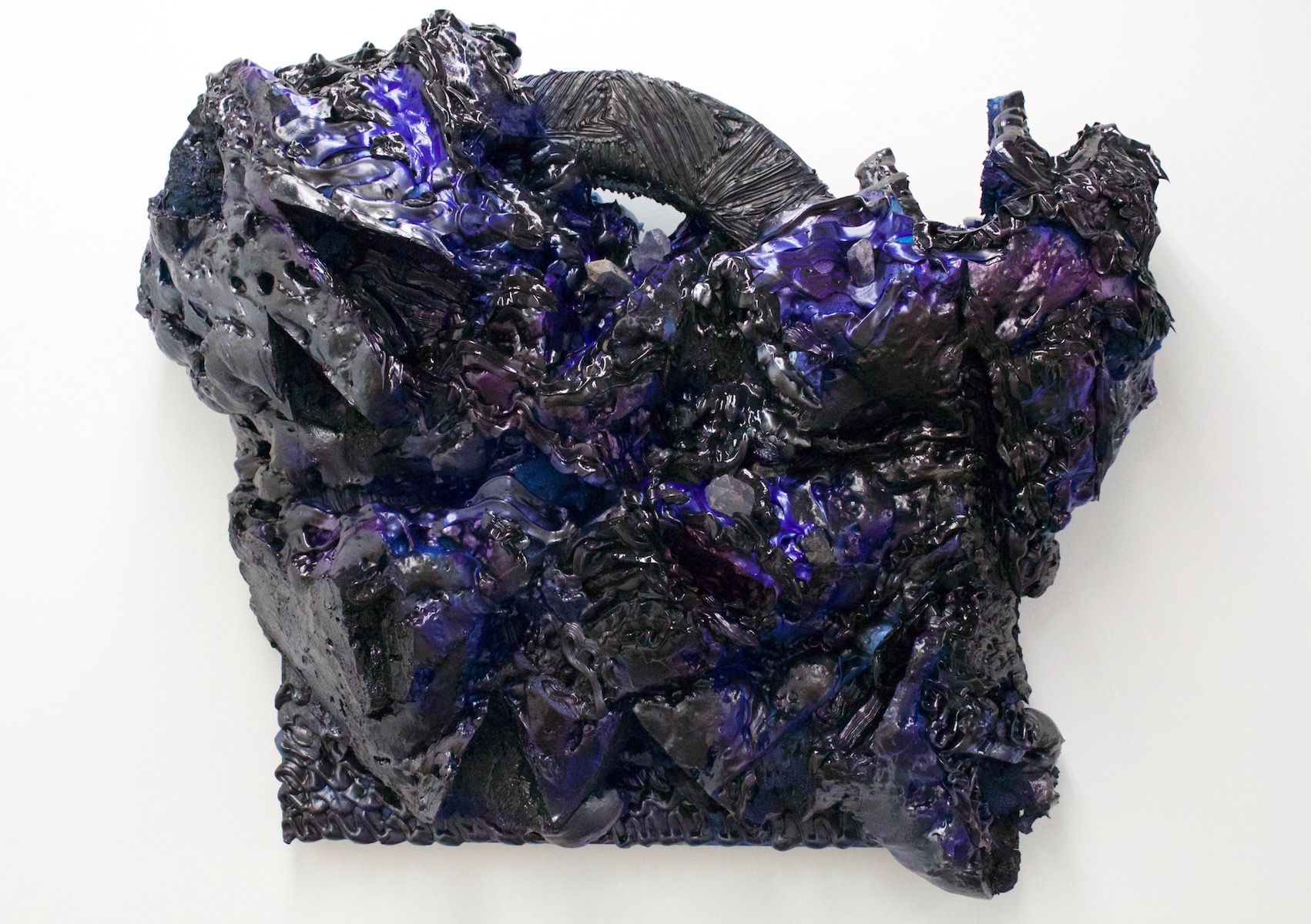
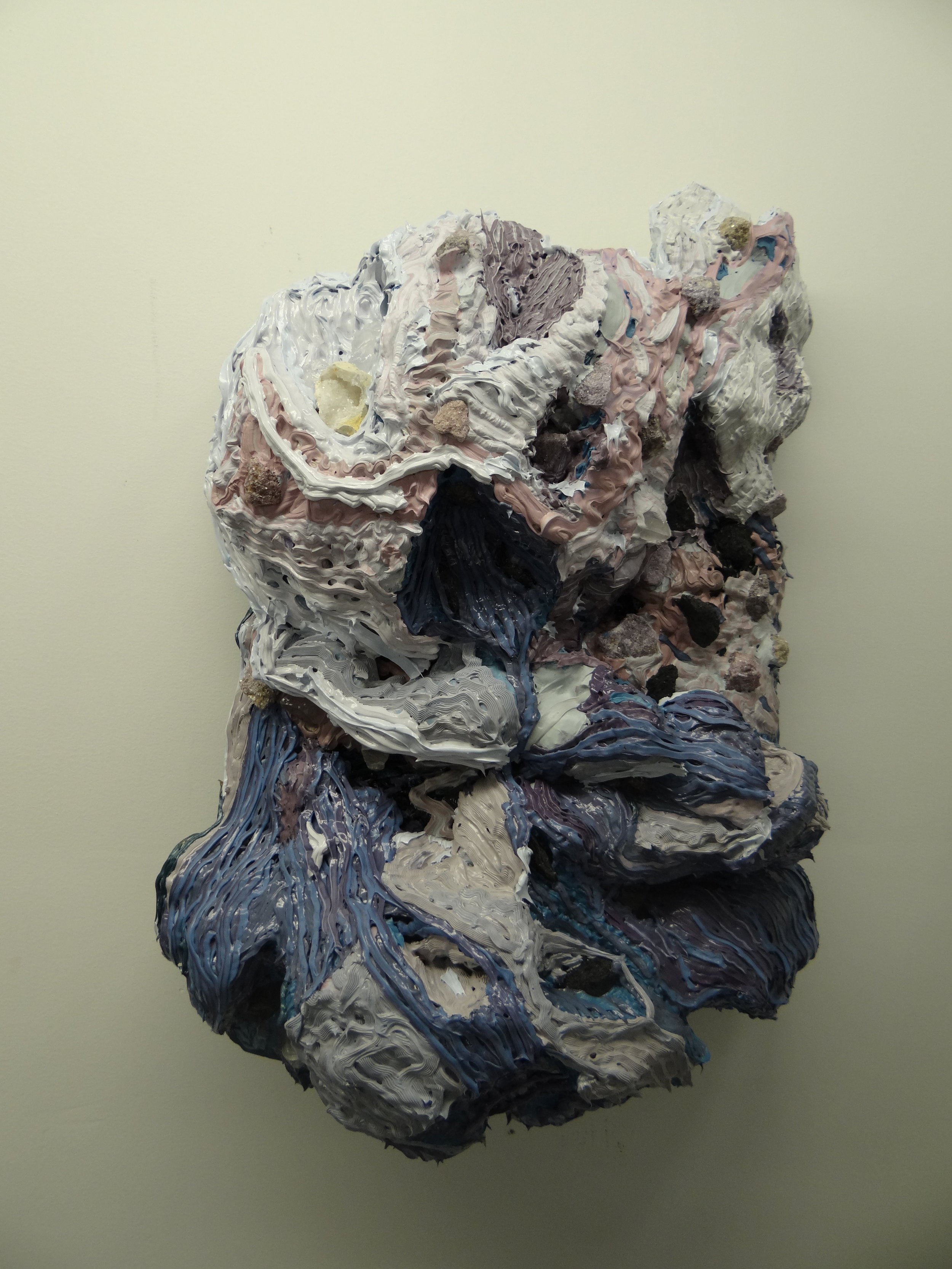
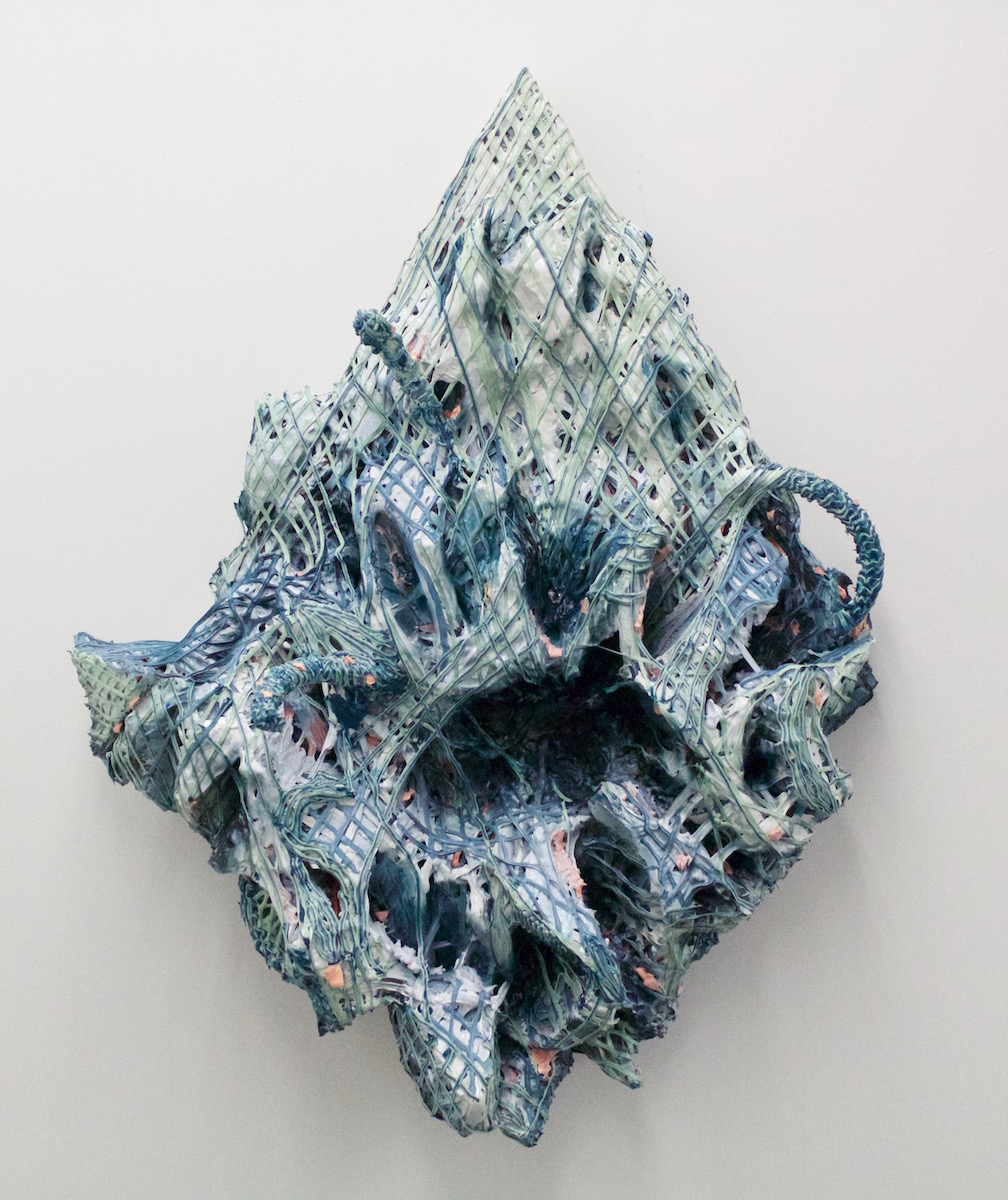
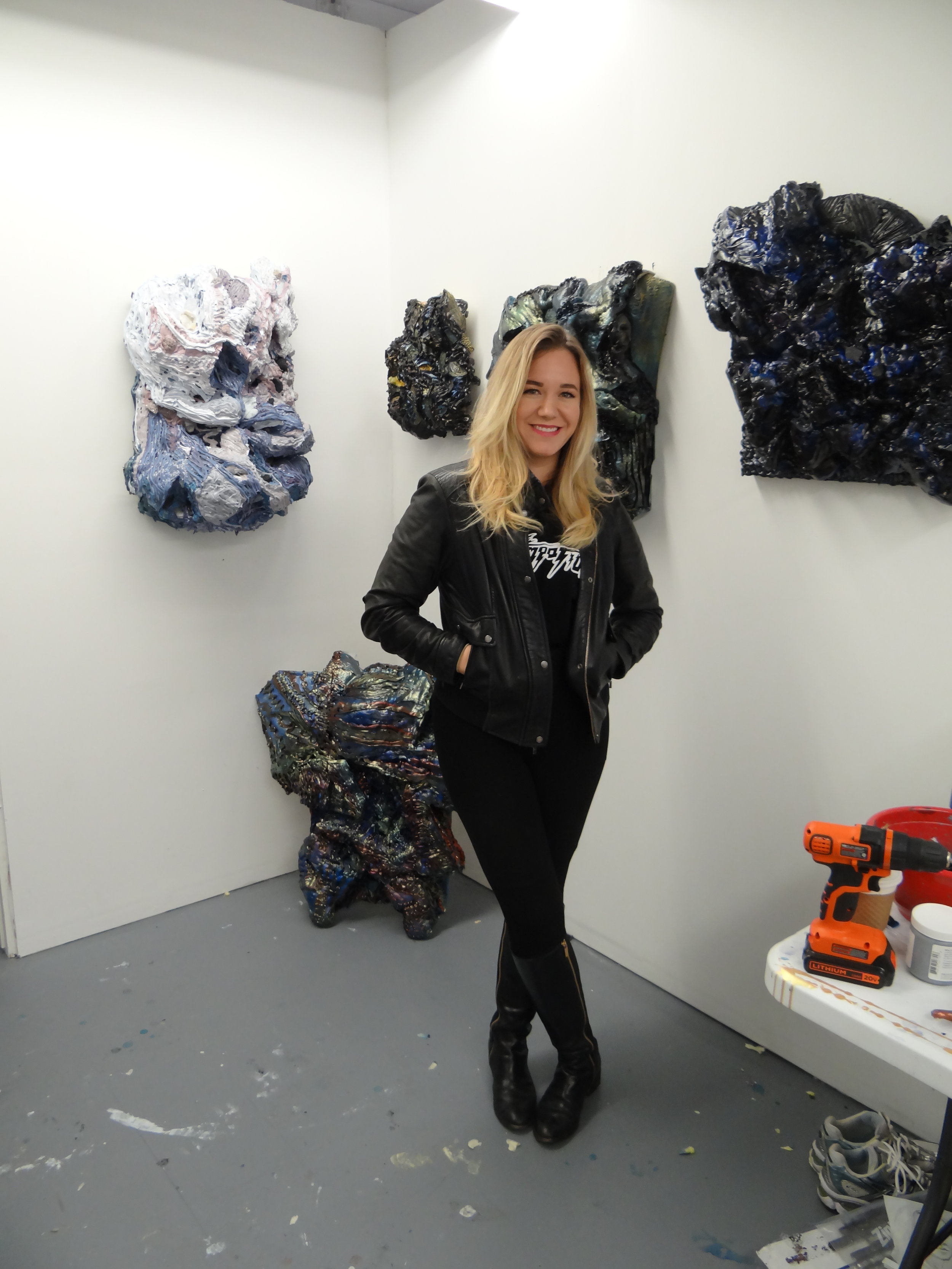
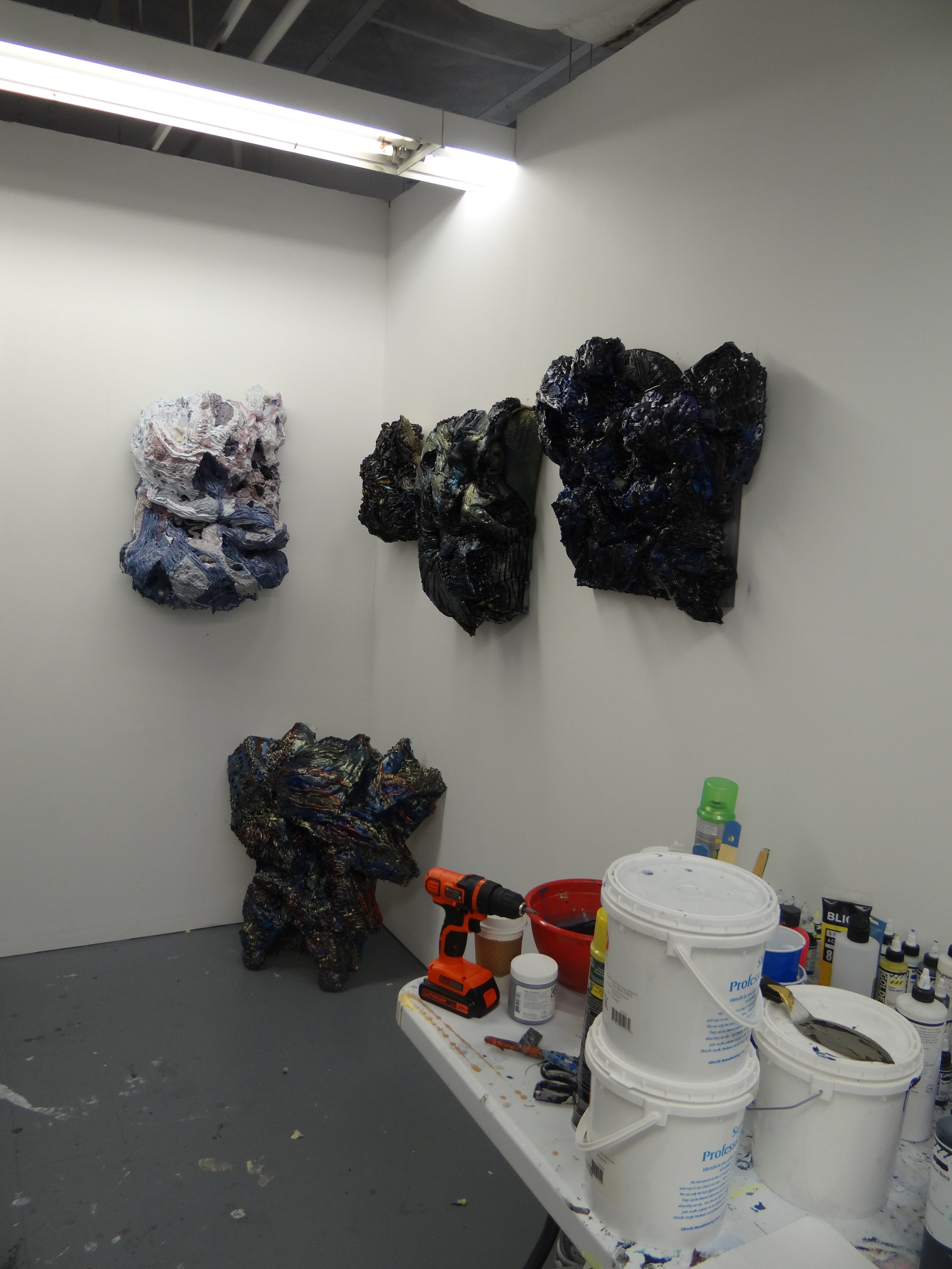
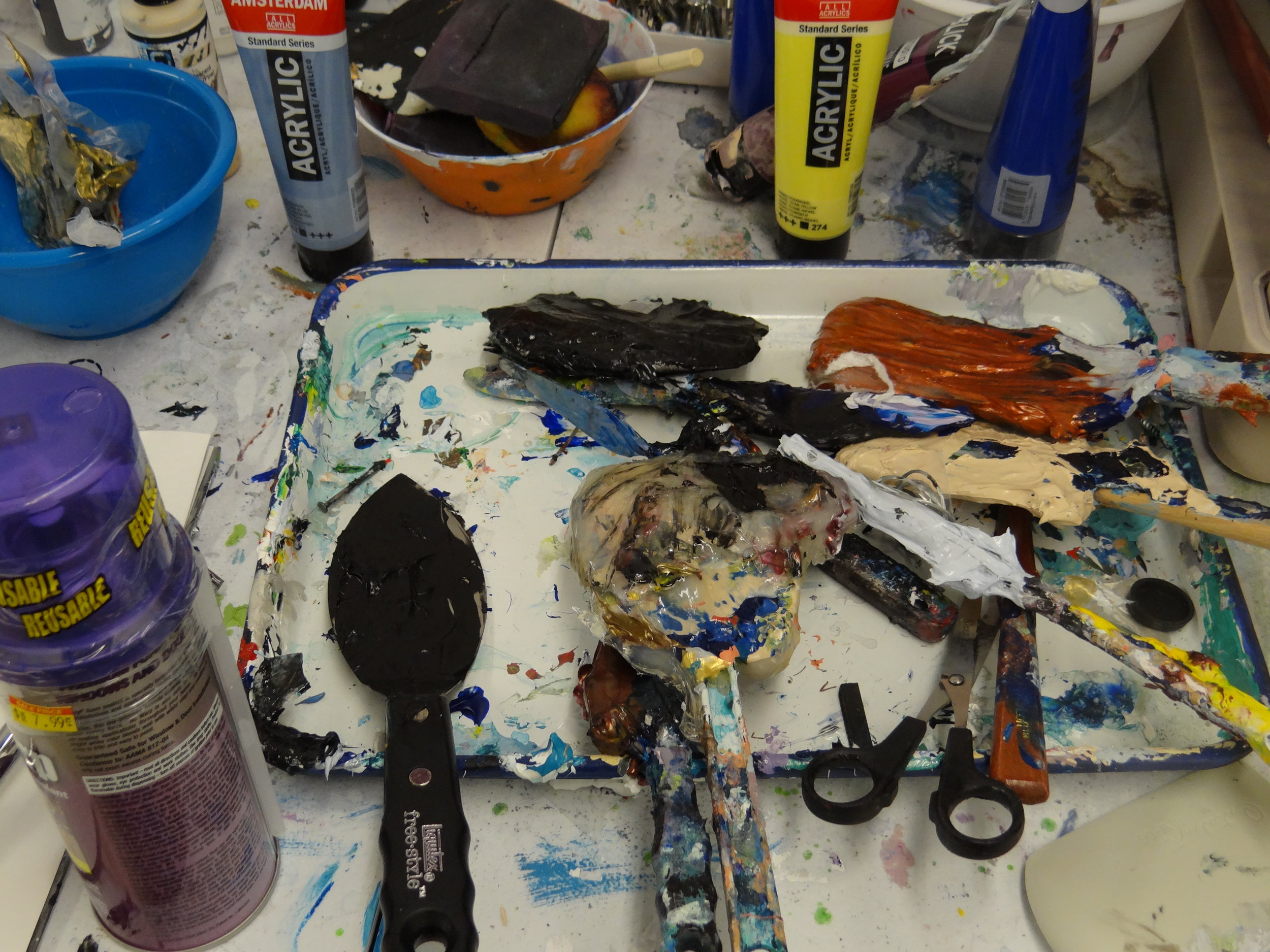
What’s your background, how did you get to New York?
Well, I grew up in Iowa in a really rural area. I got my BFA at the University of Iowa, which has a really amazing art program. Through that program, I had the opportunity to work in really great facilities and was exposed to a lot of different ways of art making. It was a very competitive environment and my professors expected a lot from us. They pushed me to think in a very serious and critical way about art, which truly prepped me for graduate school. I then moved to Washington D.C. where I got my masters at American University. I knew that five years from being out of undergrad I wanted to be living and working in New York. So, ultimately, I chose American over other schools in the Midwest, like the Art Institute of Chicago. I spent all my time in the studio in D.C., and then I’d save money and bus to New York on the weekends and go to openings. It made the transition very fluid from D.C. to New York after I graduated. I spent some time in Berlin, too, which was really fantastic.
What was your concentration, sculpture or painting?
It was painting. My work changed so drastically over the two years in grad school. A lot of the drastic changes in my work had to do with coming to New York and going to galleries and museums and being exposed to all that New York has to offer. I went from a painter to a sculptor within a pretty short period of time in my last semester there. I feel like two years is not enough time for an artist to really develop their work in grad school. The last semester was really when I started to come into a way of working that I felt like I could “put my fingerprint on.”
What were your paintings like?
Before I started making sculptural work, my paintings were very “Gerhard Richter-esque squeegee painting” meets really airbrush-y contemporary painting. I was making really large paintings that were larger than my body. They were very process-based; I really love working my ass off in the studio. I loved the idea of making work that was super labor-intensive and also physically demanding to create.
Your pieces look very labor intensive. How much time goes into making them?
I do spurts of long, uninterrupted studio time mainly because of my work schedule. I’ll go the day before I know I have a big studio day, lay down the structure of the piece, and then plan everything out so I can go in and really just focus and bang it out. I usually finish a piece within that time. It’s really the only way I can work since I can’t be in the studio every day.
What kind of environment do you feel like your work is most successful in?
I went to a residency over the summer at the Chautauqua Institution and did a lot of experimenting with putting pieces on the floor, out in nature, and on pedestals. I found that the pieces have too much chaos within them, so they need the white wall to brace them. They need a silence around them because they are so chaotic. There’s something about when you walk into a gallery and see pieces on the wall versus in the space. It seems like a kind of hierarchy. I feel like there’s just something about having work on a white wall that brings a kind of importance to the piece.
How did you move from painting to more sculptural work?
I started piping layers of paint on my paintings and it became very expensive very quickly. I couldn’t just pipe paint to build surface, that’s crazy! So I thought, “Okay, I’ll use this foam and it will act as layers of paint and I’ll pipe over it.” But then, instead of it being an illusion of thick paint, it became this totally different surface that was much more interesting. So then I was like, “What else can I put onto this surface? Maybe I should just leave it exposed? What if I airbrush it?” It was a really exciting discovery and now I am implementing all types of different materials into my work. When I go to my studio I want to be super excited. I don’t like predictable work. I geek out over work that completely surprises me.
I think my work is indulgent in its excess. I use gems and faux gator skin, gallons of piped out paint, and all sorts of weird materials. I kind of like that the my work flirts with being this sort of cheesy, excessive overload of paint and gems, while still thoughtful and well-executed. I’m using materials that I think are funny or a bit comical, like the faux gator skin for example, but still using these materials to make a thoughtful piece. I just want to make very weird, interesting wall sculptures. I don’t ever want them to be algorithmic or predictable.
How do you pick your colors?
I’m picking out fabrics now before I even make a piece, so a lot of the colors I choose are based off of the fabrics. The gems that I have are actually great color palettes to pull from as well. I lean towards metallics, blues, and blacks, but I’m trying to move out of my comfort zone and work more with neutrals.
Do you work with narratives?
For the longest time I labeled myself as a non-objective painter. I was really concerned with making work that didn’t reference anything, which I’ve since found is almost impossible for me. Now, it’s more about the material. I’m using all of these man-made materials and putting them together to make something that looks “living” or from nature. I feel like the narrative is about creating something that is more alien-like or references the natural world, but doesn’t reference anything specifically. There’s a familiarity within the work but you can’t really put your finger on it.
They do seem really celestial and futuristic.
They definitely have a futuristic feel to them. I think the metallics and crazy ooziness of the paint gives them that weird celestial feel, which I dig. The weirder the better.
So what’s the next step for you with these pieces?
I want to use crazier materials, put ceramics on them, etc. That’s what I did over the summer. My friend was a ceramicist and any pieces she didn’t use, she gave me to work with. So, I’d pipe paint over them, have them protruding out from the pieces, etc. I’d like to start implementing ceramics into my work again. I’d also really like to do some installation work where the pieces take over the whole room. Currently, I’m having some crazy shaped panels made that are a much larger scale than I have been working on as of late. I’m super excited to start working on those.
What artists do you like?
I look at a lot of contemporary work. There is this artist Hilary Harnischfeger who puts huge gems in her ceramic pieces. They are so beautiful. She’s definitely an influence. I also love Lynda Benglis.
Are your works meant to be touched?
I kind of encourage it when I have studio visits. I am really interested in sensory artwork and what happens when the senses other than sight are engaged with the work. So yeah, I don’t mind it. They’re fun to touch.
What music do you listen to in the studio?
Mitski. She’s amazing. Glasser. Anything that’s like female punk. Old school Kanye is always a go-to in the studio. I also listen to a lot of podcasts. Lately, I’ve been listening to “Stuff You Should Know” and, if I’m feeling funky, some absurd podcasts like “Comedy Bang Bang.”
